Green living, sustainable lifestyles, and eco-friendly alternatives have taken center stage over the last few years across the world. The subject was discussed on world stages like the UN Earth Summit in 1992, it was also debated in the highest ranks of the government and during lunch breaks for several decades now. Still, actual results and changes were left to be desired. Every time a child climbs on stage, the entire world goes quiet, is moved to tears, but changes still aren’t implemented. Well, the world has had enough; the younger generations are done expecting changes and reforms from the highest seats in the governments and are beginning to change their own world. And the world is finally listening.
Companies are implementing changes within their production cycles, industries are implementing reforms, and while there is always room for more change, the wheels of sustainability are starting to move. Some countries are taking what some people would call drastic steps towards a greener and more sustainable future, but stopping the use of single-use plastic bags and plastic straws is merely a ripple in an ocean of pollution. While it does have an effect, the effects are minimal and don’t impact pollution as much. However, there are steps we can all implement in our homes to make them more sustainable and eco-friendly. In a perfect world, we would all do that, and with the use of eco-friendly materials, the industries that provide them will be affected. It’s like a domino game. The smallest of pieces can work together and overturn the biggest ones. That’s what the domino effect is, after all.
This article will focus on eco-friendly interior designs that you can implement into your home on a relatively small budget. But, don’t worry. We make sure to cover as much about sustainability throughout our blogs as much as possible, so subscribe to our newsletter and stay tuned for more eco-friendly content.
What is Eco-Friendly and Sustainability in Interior Design?
The concept of sustainability started to take shape in the 1980s and 1990s when the 27 principles of sustainability were introduced. While the main three principles cover economic development, social equity, and environmental protection and integrity, these principles make their way into every aspect of life. From equal rights to working conditions, the environmentally sustainable interior design focuses on the use of aesthetic principles and strategies that will provide worldwide benefits. This is how sustainability at its core works. You can not limit sustainability to a region or a city because sustainability impacts the whole world, as does pollution.
Something else about sustainability: while it is often used as the ultimate weapon against pollution, that is just a tiny fraction of what it means. Sustainability deals with human rights, equality, equity, environmental protection, local production, and if all the principles of sustainability were adhered to by everyone, we would live in a perfect world.
Getting back to interior design, however, sustainability offers a set of guidelines that any building materials, company, developers, or homeowners can implement into their home. Through these methods, anyone can achieve an eco-friendly and sustainable interior design in their own homes. Just try to follow as much as the following recommendations during your next home renovation or when you are building a new home from the ground up, and you will have done part of your work for the planet’s benefit. We’ll try to give as much input as possible.
Eco-Friendly Materials to Use
Whether used in your flooring, furniture, rugs, or finishes, look for materials that don’t harm the environment. Green living is about more than just solar panels, heat consumption, electric cars, and artificial leather. Everything in our modern daily lives impacts the environment, and we mostly disregard this or don’t even bother to wonder about it. As this article focuses on interior design, let’s see what we can implement in our interior design to make it more eco-friendly.
Don’t Replace
I bet you weren’t expecting that one, but the first rule of sustainability is, if it doesn’t need replacement, don’t replace it. And yes, that might make an article very short, but it’s the simplest of guidelines. Anything that is replaced produces waste, and while it would be perfect for everything in your home to be chemical-free, made from green materials that don’t pollute and have no carbon footprint, the truth is that you did buy it. You have it in your home, and if you purchase something new, you give in to consumerism and create waste. So, unless you need to refurbish an old or new home from scratch, you don’t have to replace your furniture. Reuse, Reduce and Recycle – that’s the sustainability mantra.
The same goes for your home. If you don’t need to move or if your home has everything you need and size is not an issue that needs to be fixed, you don’t have to change homes. Of course, there are reasons to move somewhere else or even in another house from the same neighborhood as you, but if there isn’t a good reason for the change, don’t make the change. Any home that is sold to be replaced by a newly built one provides another type of waste. It’s not like the home will be thrown in the trash, but a new home will most likely use new materials, which is not the most eco-friendly way of living. An alternative would be to recycle building materials, but people aren’t as open to that concept yet.
Wood
Cutting down trees is not a sustainable way to go about your interior design elements, but wood is the material that will never go out of style and will always be used in construction as well as interior design. If you like the personality provided by wooden elements throughout your home, look into reclaimed wood. The best thing about wood as a material is that it can be reused, repurposed, recycled with much more ease than any other material on the market. All you need is sandpaper and patience. If you have anything that’s made out of wood, reinvent it, repurpose it, restore antique furniture or refinish wooden floors and you won’t be responsible for trees being cut down.
Bamboo
Coming from the tropical climate, we have bamboo, the most versatile grass available on the market. The best thing about it is that it grows very fast, doesn’t need 60 to 70 years of growth before it can be used as a material, but only four short years, and doesn’t need a lot of pesticides or fertilizers to ensure healthy growth. You can do pretty much anything with it, from bathroom sink cabinets to actual houses. The one downside to it is that transportation-wise, it can have an astronomical carbon footprint, so try to verify providers and buy local as much as possible.
Metal
While not as easy to recycle, reuse or repurpose as wood, metal is another highly sustainable option because even if you can not melt it at home, once melted, it can be transformed into literally anything. As the industrial design is still in trend, metal can be implemented into any kind of furniture, requires less processing, and uses fewer resources to be reinvented, especially compared to other non-renewable materials. Metal furnishings, in particular, are more sustainable than even wood because you can recycle them repeatedly without adding more of the raw material or losing their incredibly long-lasting properties.
Bio-glass
Glass can also be recycled, and it’s a process that’s been used for centuries, but bio-glass is a material that is created only from post-consumer recycled glass. This means that your glass bottle went back to the glass factory, was heated, compressed, and the result is another piece of solid-surfacing slabs. This type of glass can be used in tiles, sinks, flooring, or countertops, but try not to use it on surfaces that will sustain a lot of weight on them as it doesn’t have the same strength and durability as actual glass. Still, it is an exceptional green alternative.
Cork
We all know cork wine stoppers from our wine cellars or an expensive bottle of cognac, but cork can be manufactured in such a way that it feels and looks exactly like hardwood. This makes it an exceptionally sustainable alternative to hardwood floors as no trees need to be cut down for its production. The second reason why it is sustainable is that you can reuse it.
Fun fact, you can install flooring that is made entirely out of recycled wine stoppers. Most people can’t tell the difference unless they pay extra attention to the base material for the flooring as it looks exactly like actual wood.
Recycled Plastic
While this is not a personal favorite, we can not overlook the fact that plastic’s worst characteristic can be one of its greatest strengths. Its durability and long-lasting lifespan. While the material is non-biodegradable, this gives it an incredibly long lifespan. The reason why we don’t trash talk plastic here is that it can be reused. The material is extremely versatile, comes in any color on the horizon, and can be used for anything from bricks to yarn for clothing.
Jute Fibers
The jute plant grows incredibly quickly and is a rapidly renewable material that is also economical and eco-friendly. Similar to plastic in two ways, it is its green alternative because of its versatility and durability. While jute can not be implemented into hard surfaces, it does give a home more character and personality than plastic does. Use it throughout the home, and it works as an incredible heat insulator, ideal for rugs and seating areas or other decorative items.
Eco-Friendly Finishes
When you plan on renovating your home, whether it’s the paint you choose for your walls or the varnish you select for your furniture, the finishing touches can also promote a sustainable lifestyle. Skipping this element of your home renovation or choosing an environmentally harmful alternative can have a rough impact on your’s and your family’s health. Here we will discuss alternatives to volatile organic compounds found in many paints and varnishes available on the market. These VOCs eliminate a gas that can cause kidney damage, nausea, and pollution throughout your home, including but not limited to fungicides, pigments, and biocides.
To ensure your newly renovated home isn’t harming your health or the environment, choose eco-friendly alternatives like milk paint, water-based paint, stain and sealants, non-toxic paint, latex paint, finishes with “low VOCs”, or low-biocide paints.
Eco-Friendly Light
Through the psychology of light and color, we understand that a home’s interior design is not limited to the furniture used within the space but also to the atmosphere created through light and color. As we already covered color in finishes in the section above, here we’ll cover light’s eco-friendly applications that we know you’ll love.
Energy-efficient lighting
LED light bulbs are becoming a standard for any interior designer and light fixture provider, and homeowners should take advantage of the industry’s openness around the subject. With fewer and fewer options that don’t follow this norm, incandescent bulbs are losing terrain on the market. And that’s not a bad thing at all. Did you know that those old and antiquated bulbs use at least 75% more energy than LED bulbs and have a lifespan that’s 25 times shorter than LED bulbs?
With LED lights, you can keep your aesthetically styled chandelier, your vintage light switch, and your electrical circuit (if it’s still up to code) and just change the bulb itself. Making the change won’t affect your home’s interior design, but it will decrease your energy consumption and budget. In comparison, they are more pricey, but they last way longer than incandescent bulbs.
Light fixtures as heat loss sources?
While your doors and windows are the areas where your home suffers the most significant heat loss, take a second look at your light fixtures. You might not consider this, but light fixtures that hang from your ceiling can be a source of heat loss throughout your home. The most straightforward fix for this is ensuring additional insulation around the area where the light fixture hangs from to reduce heat loss. This will also improve cost efficiency and make your budget thrive.
Sunny days shine indoors
The Sun is the no-brainer of any eco-friendly home. Use as much natural light as possible throughout your home. To get more sunlight into your home, you need windows – the bigger, the better, but ensure they don’t affect your home’s insulation as we already mentioned the heat loss they create. Whether you use thick or sheer fabrics or go completely curtainless, natural light is your best pal. It’s free, it’s the best kind of lighting available, it’s as natural and eco-friendly as they come, it’s budget-friendly, it’s limited only by the amount of daylight available, and it’s free. Did we already mention that? Well … it’s literally and completely free. Save up on electricity and get all the vitamin D provided by nature’s best supplier.
Eco-Friendly Interior Design Ideas to Look into
Everything throughout your home can receive an eco-friendly, sustainable, green upgrade. You shouldn’t limit yourself to the options mentioned above but look into every aspect of your home. From adding an eco-friendly twist to your wardrobe to learning everything you can about restoring antique furniture, imagination knows no bounds when it comes to sustainability. Nowadays, an eco-friendly interior design doesn’t only have the benefit of being healthy for the planet, but the designs available provide a wealth of options that weren’t available before. People used to correlate an eco-friendly, green lifestyle with poor aesthetics and limited designs, but that’s no longer the case. The internet is flooded with DIYs you can do at home with basic knowledge, which results in unique conversational pieces that have the personality and the story to animate any dull moment in your home. For that reason, we’ll give you some extra tips for an eco-friendly interior design on a budget.
Be creative
It doesn’t matter if you love antique furniture or like a more modern design. Chances are you have some furniture in your home that you’ve considered throwing away. We want to stop you right there and take a closer look at that piece of furniture with a bit of mileage under its varnish. Does it have structural integrity? Is it a piece of furniture whose purpose in your home still makes sense? And now comes the big one … Can it be reused, repurposed, restored, renewed, recycled, refinished, or sold at a garage sale? If the answer is yes to all the above questions, then why throw it away?
You’ll always need a desk, a wardrobe, kitchen cabinets, dining room table, chairs, and everything in between. Did you know you can reinvent kitchen cabinets for a fraction of the cost instead of replacing them even though that change is the most significant furniture expense in most homes? Antiques are also fantastic pieces that work amazing as accent furniture because of their unique aesthetics and style, especially in a contrasting interior design style. Also, shopping for antiques is a sustainable, affordable, and eco-friendly alternative to own high-quality furniture at a reasonable price. You might have to do a quick fixer-upper on it, but the cost will be a fraction of the expense of new furniture. Give vintage pieces new life and save your budget from depletion.
Pay attention to energy efficiency
After we made sure you understand that old can be reused, let’s look at the new. Any electrical appliances throughout your house might cause more harm than good to the environment if you don’t replace them. Now, we don’t mean to say that you should change every appliance throughout your home but pay attention to their energy efficiency. Eco-friendly appliances can be found among the Energy Star models and if you’ve been planning to replace your refrigerator, take a look at their options. This might help you reduce power consumption like crazy.
Eco-friendly interior design styles
Without getting into too many details, we’ll cover the most eco-friendly interior design styles that tend to last longer than farmhouse style and are more user-friendly than baroque.
- Minimalist – KonMari – the art of decluttering is all about minimalism and creating an ergonomic, sustainable and waste-free home. Own less, waste less, produce less.
- Scandinavian – also a part of the minimalist trend, Scandi trends implement Hygge – the Danish art of happiness into their interior designs that are linked to eco-friendly lifestyles that exceed your home’s interior design.
- Rustic – we did just mention the farmhouse trend by saying it won’t last long. Still, as part of the rustic style, along with others, it incorporates sustainable and green materials throughout the interior design.
Conclusion
In the end, your home is your castle, or palace, or cozy warm cottage, but it is yours. It is your decision whether you want it to be a happy, healthy, and environmentally friendly home or not. All we can do is provide you with all the information required for you to infuse eco-friendliness and sustainability into your dwelling. You have the last word, but the planet will either suffer from it or thank you in the long run.
It’s not a difficult or expensive decision to make, and no one requires you to make it today, tomorrow, or next year. During your next move or next renovation try to think sustainably and focus on improving your spending habits. And we’re not only thinking about this one home that we all share. We are thinking about your family, your children, your health, and your economy. Sustainability is about everything that lives, breathes, and exists on this planet, whether it’s a building material or a living human being. You are one, and your home is also one. Make it a safe one, for you, for your children, and our unique home, planet Earth.
Let us know in the comments below what else you would like us to cover regarding sustainability, and we’ll be more than happy to oblige. You can also throw in any questions related to this subject, and we’ll provide an answer, to the best of our abilities, as soon as possible. This blog is intended to help homeowners and real estate professionals in their real estate endeavors, regardless of the form of these endeavors, so don’t be shy.
Like & Share this article with anyone you know who is planning a renovation or a move in the near future. Whether you’re a young professional, a retiree, a single mother, or a family of four that’s starting their life in a new city. We are here to help you regardless of your background, lifestyle, likes, or dislikes because the planet is here for all of us. Let’s make a good home together.

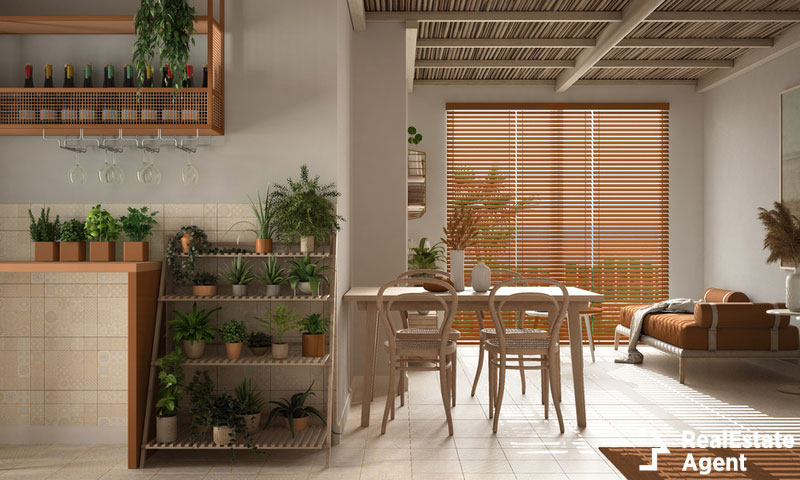










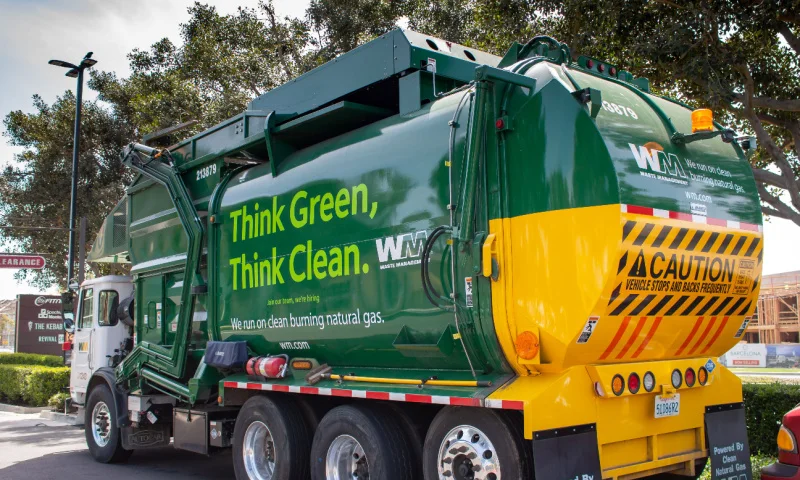

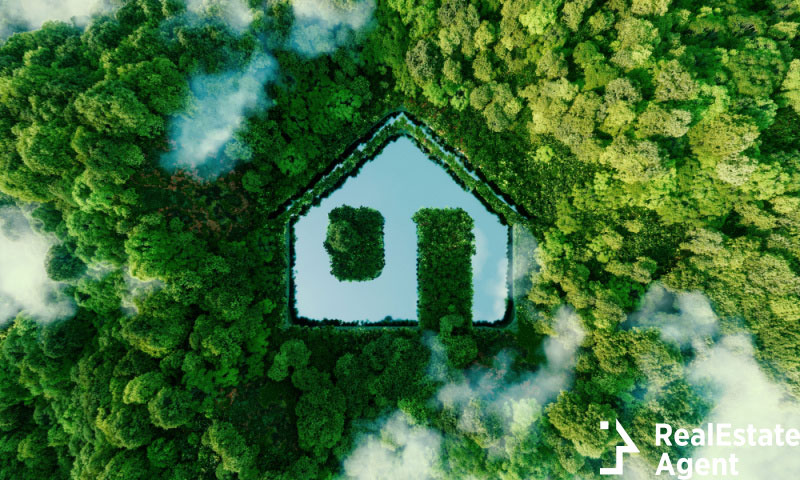
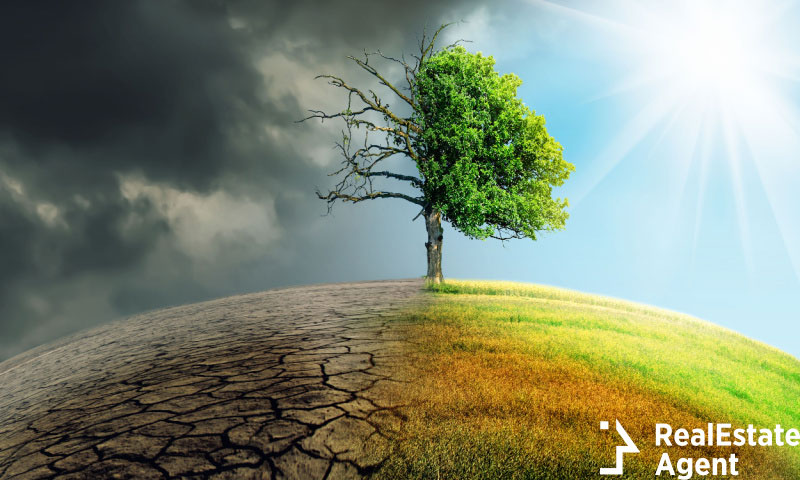
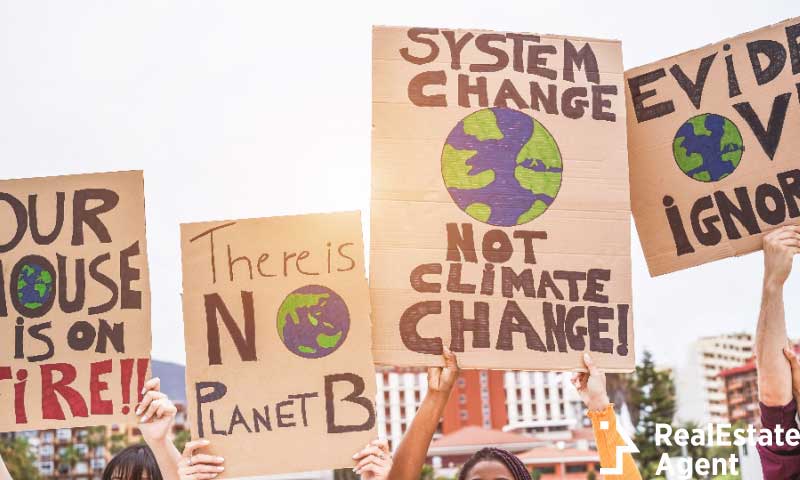


What a fantastic, comprehensive article! So many helpful and practical ideas that actually SAVE money.